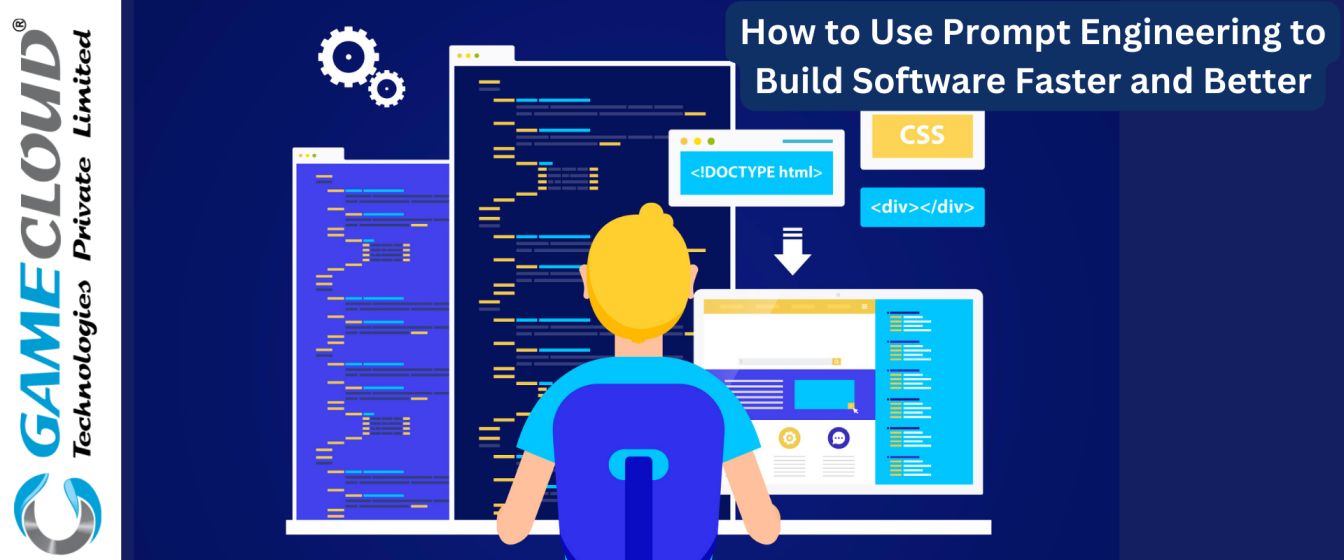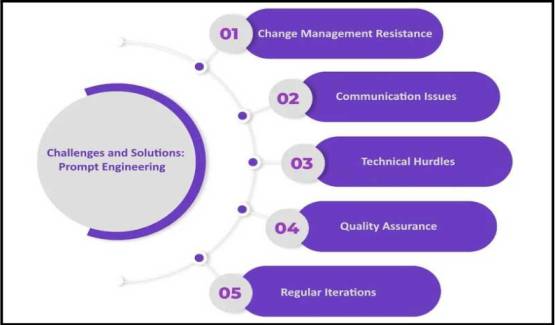
Proper prompt engineering is a crucial aspect of software development that involves crafting input queries or instructions to elicit more accurate and desirable outputs from language models. It is essential for working with artificial intelligence (AI) applications, helping developers achieve better results from language models. Prompt engineering requires a balance of precision and creativity, as well as a deep understanding of the model’s mechanics and the nuances of language interpretation. The practice involves refining prompts to elicit specific responses or behaviours, using the idiosyncrasies of the model’s training data and architecture. Effective prompt engineering can lead to more accurate and contextually relevant results, making AI systems more reliable and easier to use.

Some benefits of using prompt engineering in software development include:
- Enhanced accuracy and relevance: By deploying prompt engineering, organisations can ensure that AI models generate outputs that are highly accurate and relevant to their specific objectives. The careful crafting of prompts allows AI systems to understand contextual nuances, interpret data effectively, and provide precise insights, minimising errors and optimising outcomes.
- Improved decision-making: Prompt engineering enables organisations to extract actionable intelligence swiftly from vast amounts of data. By fine-tuning prompts, businesses can obtain relevant information, make informed decisions, and respond promptly to market dynamics.
- Personalised customer experiences: Prompt engineering allows organisations to create AI models that provide personalised recommendations, tailored responses, and seamless interactions with customers.
- Reduced development time: Effective prompt engineering can speed up development time by providing accurate and relevant results, reducing the need for extensive testing and debugging.
- Increased scalability: Prompt engineering can help organisations scale their AI applications more effectively by providing detailed prompts that guide AI models to generate accurate and contextually relevant outputs.
Challenges of Prompt Engineering and Possible Solutions
Implementing prompt engineering in software development comes with its set of challenges despite its numerous benefits. One key challenge developers face is ensuring that prompts are crafted effectively to guide AI models accurately. Crafting prompts that lead to the desired outcomes can be complex, requiring a deep understanding of the model’s training data and architecture. Additionally, developers often grapple with the issue of ensuring that prompts contain enough relevant information to prevent “hallucinations” or inaccurate outputs from AI models. This challenge highlights the importance of creating prompts that are detailed and contextually rich to guide AI systems effectively.
Another significant challenge in prompt engineering is the need for continuous adaptation and refinement. As AI models evolve and new data is introduced, prompts may need to be adjusted to maintain optimal performance. This ongoing process of tweaking prompts to align with changing requirements and data can be time-consuming and resource-intensive.
Furthermore, there is a challenge in ensuring that prompt engineering practices are effectively integrated into the software development lifecycle. This requires a shift in mindset and methodologies to incorporate promptness, rapid prototyping, and constant feedback loops at every stage of development. Adapting traditional software development processes to accommodate prompt engineering principles can be a significant organisational change that requires careful planning and execution.
To address these, comprehensive training programs can be implemented to educate team members on the benefits of prompt engineering, showcasing how it can enhance efficiency and outcomes. Incorporating feedback mechanisms to fine-tune the process based on team input can also help in overcoming resistance and fostering adoption.
Effective communication is another critical aspect of prompt engineering that can pose challenges if not managed properly. Establishing clear communication channels and implementing efficient communication tools within development teams can mitigate breakdowns in communication, ensuring that prompt engineering practices are effectively integrated into the workflow.
Transitioning to prompt engineering may involve the adoption of new tools and technologies, presenting technical hurdles for development teams. Providing adequate training and resources to support team members in learning and utilising these new tools can help overcome this challenge, enabling a smoother transition to prompt engineering practices.

Maintaining high quality while increasing speed is a common concern in prompt engineering. Deploying automated testing tools and continuous integration practices can ensure quality control at each stage of development, addressing the challenge of balancing speed with quality assurance effectively.
By addressing challenges such as change management resistance, communication issues, technical hurdles, and quality assurance concerns through practical solutions and strategies, organisations can successfully implement prompt engineering in software development, leading to more efficient processes and improved outcomes.
How can prompt engineering improve the quality of software development?
Prompt engineering plays a pivotal role in enhancing the quality of software development by introducing efficiency, speed, and precision into the software development lifecycle. By integrating prompt engineering practices, software development teams can significantly improve planning stages by gathering and analysing requirements faster, kick-starting the development process with a focus on speed and efficiency. During the design phase, prompt engineering encourages the use of rapid prototyping tools, enabling iterative refinement of designs for robust and dependable software in less time. In the coding phase, prompt engineering promotes agile methodologies and continuous integration tools for rapid testing and efficient issue resolution.
Moreover, prompt engineering ensures that testing remains thorough despite the emphasis on speed. Automated testing tools are utilised to quickly identify and rectify any bugs, ensuring that software products meet required quality standards. Even after deployment, prompt engineering principles guide the maintenance phase with quick response times, efficient communication, and prompt problem-solving practices to maintain software reliability and relevance.
By emphasising speed and efficiency at every stage of the software development lifecycle, prompt engineering significantly reduces time-to-market, leading to quicker returns on investment and greater competitiveness in the marketplace. Despite the focus on speed, quality is not compromised as rigorous testing processes and continuous integration practices ensure a high standard of software output. The collaborative nature of prompt engineering fosters better design, efficient implementation, thorough testing, smooth deployment, proactive maintenance, increased customer satisfaction, and reduced costs in software development projects.
How does prompt engineering differ from traditional software development methods?
Prompt engineering differs from traditional software development methods by introducing a paradigm shift that emphasises speed, efficiency, and precision throughout the software development lifecycle. Unlike traditional approaches that may struggle to meet modern demands, prompt engineering seamlessly integrates into the software development lifecycle, offering a fresh perspective and enhancing efficiency at each stage.
One key difference lies in the planning stage, where prompt engineering significantly improves the process by gathering, analysing, and documenting requirements faster, kick-starting development with a focus on speed and efficiency. During the design phase, prompt engineering encourages rapid prototyping tools for iterative refinement of designs in less time, ensuring robust and dependable software output.
In the coding phase, prompt engineering promotes agile methodologies and continuous integration tools for rapid testing and efficient issue resolution. Despite the emphasis on speed, thorough testing remains a priority in prompt engineering through the use of automated testing tools to identify and fix bugs promptly.
Even after deployment, prompt engineering continues to guide the maintenance phase with quick response times, efficient communication, and proactive problem-solving practices to maintain software reliability and relevance. This approach ensures that software products remain up-to-date and continue to meet users’ needs effectively.
Overall, prompt engineering revolutionises software development by integrating speed, efficiency, improved communication, flexibility, and quality assurance practices while maintaining high-quality standards throughout the development process. This innovative approach fosters better design, efficient implementation, thorough testing, smooth deployment, proactive maintenance, increased customer satisfaction, and reduced costs in software development projects.

Business Benefits of Prompt Engineering in the Software Development Industry
Prompt engineering in the software development industry offers a lot of business benefits that can transform how software is built, delivered, and maintained. This innovative approach focuses on speed, efficiency, and high-quality output throughout the software development lifecycle, providing organisations with a competitive edge in the fast-paced tech landscape.
- Faster Time-to-Market: By emphasising speed and quick delivery, prompt engineering significantly reduces the lead time for delivering software products. Through rapid prototyping and constant feedback loops, software is delivered to clients in a fraction of the time it used to take.
- Improved Collaboration: Prompt engineering encourages team members to work closely together, fostering collaboration and effective problem-solving. Constant feedback loops enable teams to address issues promptly, solve problems efficiently, and ensure that the software meets client needs.
- Increased Client Satisfaction: Through quick iterations and continuous feedback, prompt engineering ensures that software meets client requirements effectively. This leads to higher client satisfaction levels and enables quick identification and resolution of any concerns they may have.
- Reduced Costs: Prompt engineering emphasises rapid prototyping and quick iterations, allowing early identification and resolution of issues in the development process. This proactive approach saves time and money in the long run by addressing challenges early on.
- Enhanced User Experience: With a focus on quick feedback and iteration, prompt engineering aims to create software solutions that meet user needs effectively. This results in better user experiences and more user-centric software products.
- Superior Control Over Development: Prompt engineering provides organisations with greater control over the development process by enabling quick adjustments, efficient problem-solving, and streamlined workflows.
- Increased Scalability: By adopting prompt engineering practices, businesses can develop scalable software solutions that can adapt to evolving market demands efficiently.
Conclusion
Prompt engineering is not just a concept but a transformative paradigm shift in software development that offers numerous advantages over traditional methods. By integrating speed, efficiency, improved communication, flexibility, and quality assurance practices, organisations can deliver software faster, and more efficiently than ever before while maintaining high-quality standards throughout the development process. Embracing prompt engineering can lead to faster time-to-market, enhanced collaboration, increased client satisfaction, reduced costs, superior control over development processes, improved user experiences, and increased scalability for businesses in the competitive software development industry.
